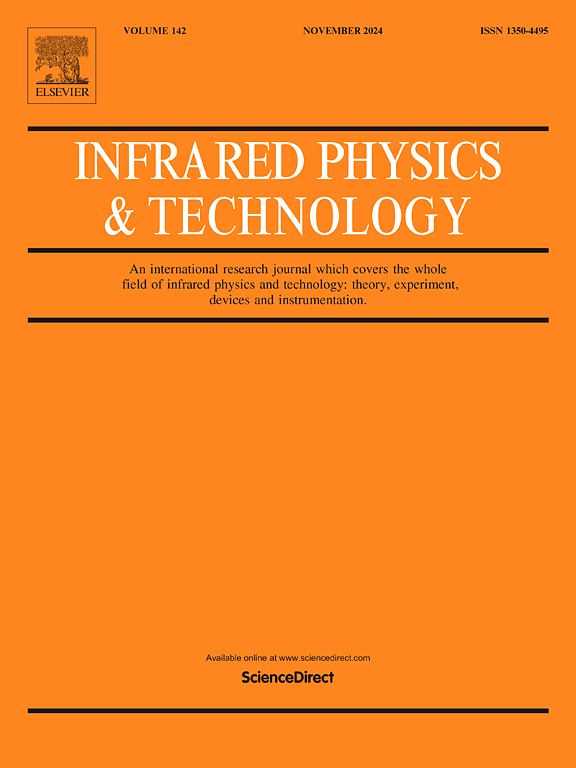水动力耦合下煤岩红外辐射与能量演化效应
IF 3.1
3区 物理与天体物理
Q2 INSTRUMENTS & INSTRUMENTATION
引用次数: 0
摘要
随着地下工程中水侵问题的日益严重,迫切需要水害预测预警系统。本文通过室内实验研究了水-力耦合条件下煤岩的红外辐射和能量演化效应,旨在预测煤岩破裂后的突水。内腔直径为50 mm,内腔深度为60 mm的红砂岩试件,通过液压泵承受0 MPa、0.2 MPa、0.4 MPa和0.6 MPa的水压,垂直方向单轴加载。分析了岩石破坏过程中应力-应变行为、能量演化、平均红外辐射温度(AIRT)和连续负红外像温度方差(VSMIT)特征。此外,一个新的指标,像素标准偏差的温度(PSD),被引入加强评估这些现象。结果表明,水压显著降低了岩石的单轴抗压强度,0.6 MPa时岩石的抗压强度比0 MPa时降低了37.09%;弹性能与耗散能(KED)的比值随着时间的推移而演变,使人联想到峰值形状,具有明显的最大值,可能是岩石破坏和水爆发的前兆。AIRT曲线的变化与应力曲线的变化具有高度的一致性;具体来说,随着水压的增加,AIRT波动幅度减小。在应力峰值时刻,VSMIT发生脉冲突变,且VSMIT波动频率与应力降现象的发生相关,应力降事件次数越多,VSMIT突变次数越多。PSD图像稳定在最终破坏时间的70%左右,此时不同水压下峰值应力的比例分别为67.76%、77.62%、81.54%和53.69%。在此基础上,可以对不同水压条件下煤岩破坏和突水的时间和形态进行预测。人工神经网络(ANN)模型是预测岩石破坏和突水的有效方法;神经网络对应力-应变行为和KED的预测与实际结果非常接近,表明时间和红外指标可以作为预测砂岩破坏和相关突水的有效输入。本文章由计算机程序翻译,如有差异,请以英文原文为准。
Infrared radiation and energy evolution effects of coal rock under hydrodynamic coupling
Given the escalating issues of water intrusion in underground engineering, there is an urgent need for predictive warning systems regarding water-related disasters. This paper investigates the infrared radiation and energy evolution effects of coal-rock under hydromechanical coupling conditions through laboratory experiments, aiming to anticipate water outbursts resulting from the fracturing of coal-rock. Red sandstone specimens containing internal cavities with a diameter of 50 mm and a depth of 60 mm were subjected to water pressure of 0 MPa, 0.2 MPa, 0.4 MPa, and 0.6 MPa, applied internally via a hydraulic pump, while uniaxial loading was conducted in the vertical direction. This study analyzed the characteristics of Stress-Strain behavior, Energy evolution, Average Infrared Radiation Temperature (AIRT), and Variance of Successive Minus Infrared Image Temperature (VSMIT) during the rock failure and subsequent water outburst events. In addition, a novel indicator, the Pixel Standard Deviation of temperature (PSD), is introduced for enhanced assessment of these phenomena. The results indicate that water pressure significantly reduces the uniaxial compressive strength of the rock, with a decrease of 37.09 % observed at 0.6 MPa compared to 0 MPa. The ratio of elastic energy to dissipated energy (KED) evolves over time in a manner reminiscent of a peak shape, with distinct maxima that may serve as precursors to rock failure and water outbursts. The variations in the AIRT curve exhibit a high degree of consistency with those of the stress curve; specifically, as water pressure increases, the amplitude of AIRT fluctuations diminishes. At the moment of peak stress, the VSMIT experiences abrupt pulse changes, and the frequency of these VSMIT fluctuations is correlated with the occurrence of stress drop phenomena: an increase in the number of stress drop events corresponds to a greater number of VSMIT sudden changes. The PSD image stabilizes at approximately 70 % of the final failure time, at which point the proportions of stress at peak values under different water pressures are 67.76 % σp, 77.62 % σp, 81.54 % σp, and 53.69 % σp, respectively. Based on this, it can be utilized to predict the timing and morphology of coal and rock failure and water outbursts under varying water pressure conditions. Artificial Neural Network (ANN) model is effective for predicting rock failure and water outbursts; the predictions related to stress–strain behavior and KED from the neural network closely align with actual results, suggesting that temporal and infrared indicators can serve as effective inputs in forecasting sandstone failure and associated water outbursts.
求助全文
通过发布文献求助,成功后即可免费获取论文全文。
去求助
来源期刊
CiteScore
5.70
自引率
12.10%
发文量
400
审稿时长
67 days
期刊介绍:
The Journal covers the entire field of infrared physics and technology: theory, experiment, application, devices and instrumentation. Infrared'' is defined as covering the near, mid and far infrared (terahertz) regions from 0.75um (750nm) to 1mm (300GHz.) Submissions in the 300GHz to 100GHz region may be accepted at the editors discretion if their content is relevant to shorter wavelengths. Submissions must be primarily concerned with and directly relevant to this spectral region.
Its core topics can be summarized as the generation, propagation and detection, of infrared radiation; the associated optics, materials and devices; and its use in all fields of science, industry, engineering and medicine.
Infrared techniques occur in many different fields, notably spectroscopy and interferometry; material characterization and processing; atmospheric physics, astronomy and space research. Scientific aspects include lasers, quantum optics, quantum electronics, image processing and semiconductor physics. Some important applications are medical diagnostics and treatment, industrial inspection and environmental monitoring.

 求助内容:
求助内容: 应助结果提醒方式:
应助结果提醒方式:


